Witchdoctor Rating
-
- 9.5/109.5/10
Summary
GARY STEEL is falling in love with music all over again, and it’s taken a nifty valve amplifier to shoot love’s arrow.
$5699
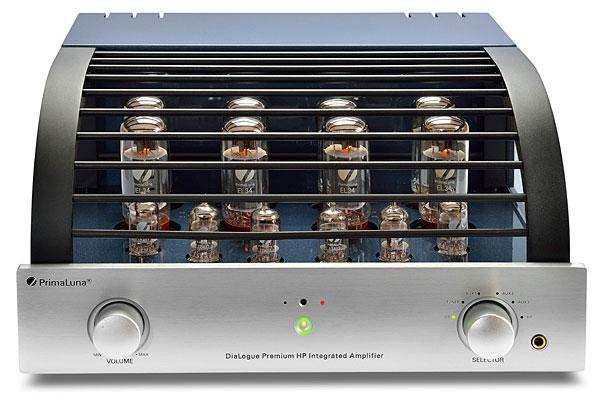 I’m a materialist. There: I’ve said it. My intensely religious parents turned me off religion forever, but for many years, I hung onto some notion of spirituality. At 58 years of age, however, I can now report that I’m quite comfortable with atheism.
I’m a materialist. There: I’ve said it. My intensely religious parents turned me off religion forever, but for many years, I hung onto some notion of spirituality. At 58 years of age, however, I can now report that I’m quite comfortable with atheism.
Why is this relevant to a review of the latest iteration of PrimaLuna’s Dialogue integrated valve amp? I beg your indulgence.
It doesn’t take much research (or even a half-hearted Google) to come to the conclusion that there are many different stripes of hi-fi enthusiasts, and that opinions in the audiophile netherworld are as divisive as they are in the political spectrum. For the purposes of this review, however, I’m going to make an outrageous proposition: that there are two types of stereo nut, the seeker of the mysterious sonic miracle, and the science-based dabbler.
The science-based brigade are those who look at graphs and spectrum analysers and declare that a hi-res digital file is easily better than an LP record; that a Class-D amp is demonstrably more accurate than a valve amp. The seeker of the mysterious sonic miracle, on the other hand, is basically searching for an out of body experience, something that can’t be explained by graphs and data.
Over the past few years, I’ve slowly come to the realisation that I’m a bit of both. While I believe in science, I also trust my ears, and the fact that I don’t believe there’s a big guy in the sky looking down on his human puppets doesn’t mean that I’m immune to what many would call an extra sensory experience.
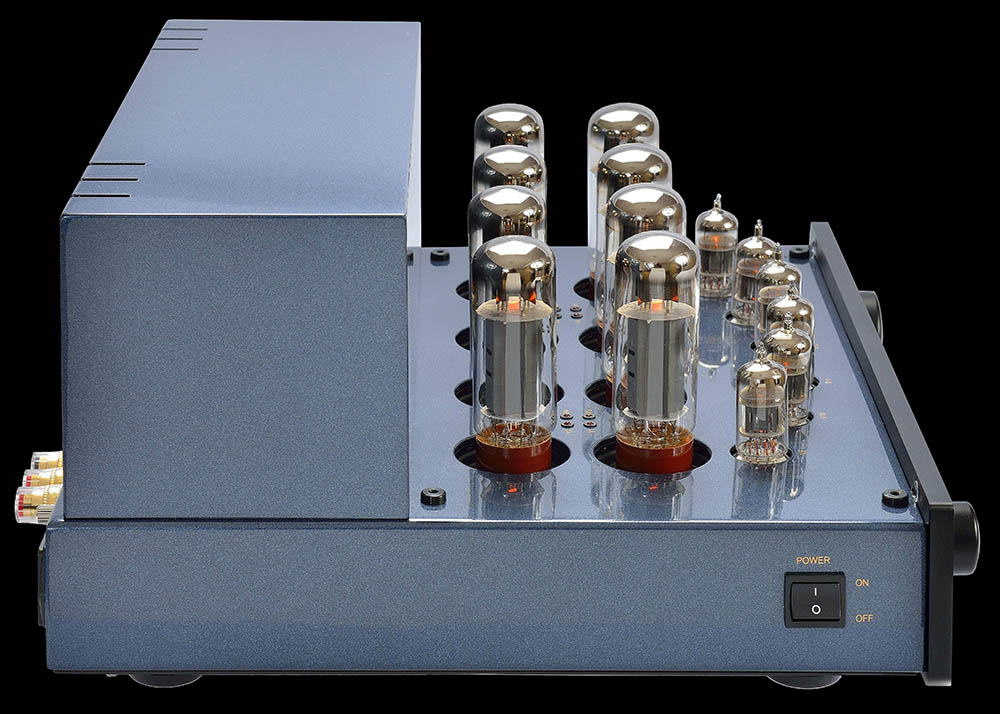 For many years I more or less followed a science/evidence-based path when it came to hi-fi, although I have dabbled in what valve connoisseurs would consider a kind of kindergarten of tube exploration: for a few months I owned a Shanling integrated which combined amp with CD player, and then there was another rather fine-sounding Chinese CD player with a valve stage. Recently, I wrote about a Project Tube Box II, and that certainly got my full admiration. [By the way, the PrimaLuna is conceptualised in Holland and realised in China.]
For many years I more or less followed a science/evidence-based path when it came to hi-fi, although I have dabbled in what valve connoisseurs would consider a kind of kindergarten of tube exploration: for a few months I owned a Shanling integrated which combined amp with CD player, and then there was another rather fine-sounding Chinese CD player with a valve stage. Recently, I wrote about a Project Tube Box II, and that certainly got my full admiration. [By the way, the PrimaLuna is conceptualised in Holland and realised in China.]
Mostly, however, I’ve shunned valve gear, because statistically, it doesn’t measure up. And more importantly, it’s just not convenient. I’m a busy guy who just wants to be able to enjoy music on his hi-fi, not tinker endlessly, and certainly not have to go through the tortuous process of identifying when a valve is deteriorating, and then the onerous task of replacing it. Of course, probably the majority of audiophiles love endlessly tinkering with their systems, but I’m not one of them.
But then something happened that changed my life forever. Late last year, I bought a pair of GoldenEar Triton speakers. They sounded amazing, but somehow, I just wasn’t engaging with them. This situation lagged on for about seven months, and I got more and more despondent. The Triton speakers had received universal praise from the most respected sources. Their price (about $10K in NZ dollars) isn’t to be sneezed at, but reviewers were happy to place them in the company of brands and models four or five times the dollar value. They won award after award, and I’ve still not cited a negative review. And yet, powered by my modest Perreaux Audient 80i integrated, I just wasn’t enjoying what I was hearing.
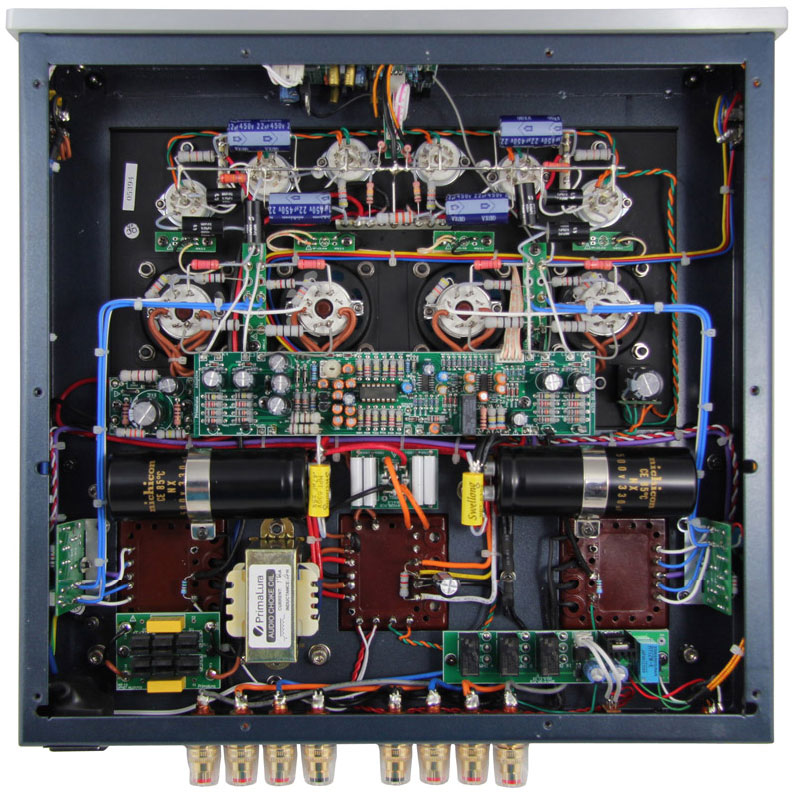 The only specific thing I could point to was a certain harshness in the upper registers on some (mostly older) discs, especially where screaming electric guitars and screaming voices were competing for sonic territory. But generally, I could sit there rationally assessing the sound as exceptional, while not feeling anything, and not enjoying the music. How could this be? Had music – after a lifetime of reviewing albums for a living – simply lost its allure?
The only specific thing I could point to was a certain harshness in the upper registers on some (mostly older) discs, especially where screaming electric guitars and screaming voices were competing for sonic territory. But generally, I could sit there rationally assessing the sound as exceptional, while not feeling anything, and not enjoying the music. How could this be? Had music – after a lifetime of reviewing albums for a living – simply lost its allure?
Something had to be done. I’d had my eyes on the new-gen PrimaLuna Dialogue Premium HP Integrated Amplifier ever since Paul Quilter (of PQ Imports) used it to demonstrate a pair of ProAc speakers at his Tamihere HQ last September. I was captivated. This short demo had me in thrall to the ProAcs, but what I was really hearing was synergy between two special, well-matched components. So, a few months back, I suggested to Paul that he send me one of the PrimaLuna amps to review. In the back of my mind, of course, I was hoping that the newish Dialogue HP would solve my problem. After all, there’s nothing more useless than a music critic who no longer enjoys listening to music.
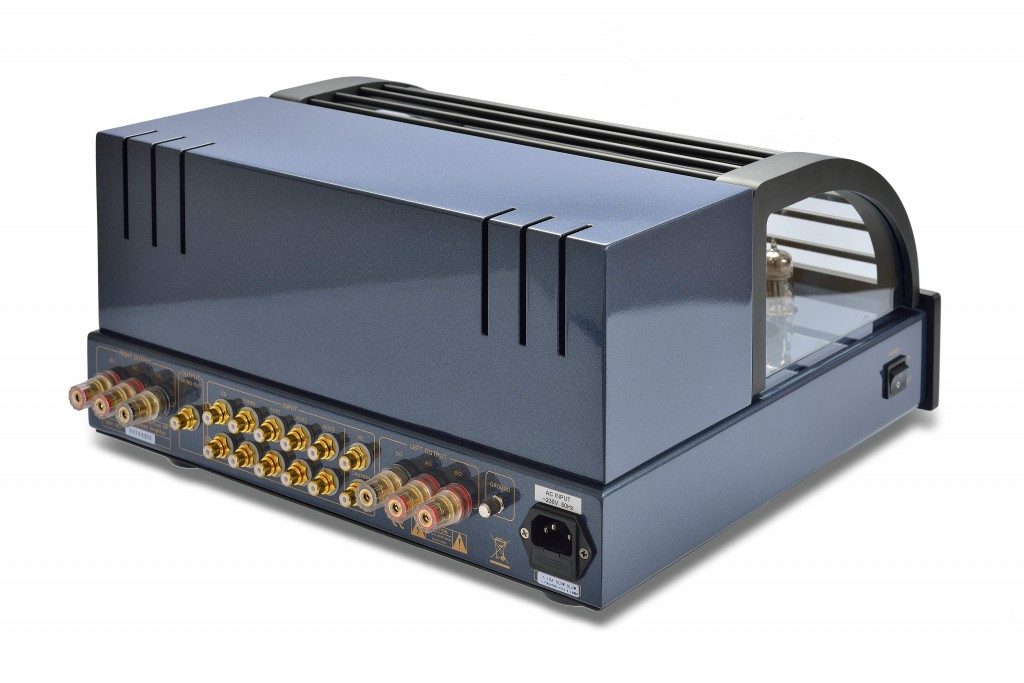 Paul explained to me that all GoldenEar loudspeakers are exclusively run on valve amps, and that in his opinion, the PrimaLuna/GoldenEar match was – to use an ‘80s expression – pretty ace. He was right. Literally within minutes of flicking the ‘on’ switch, I was being musically captivated, metaphorically chained to my seat by the sweet sounds. Apparently with valves there’s no run-in period, and PrimaLuna reckon that the Dialogue HP sounds great as soon as you turn it on first time; and I agree.
Paul explained to me that all GoldenEar loudspeakers are exclusively run on valve amps, and that in his opinion, the PrimaLuna/GoldenEar match was – to use an ‘80s expression – pretty ace. He was right. Literally within minutes of flicking the ‘on’ switch, I was being musically captivated, metaphorically chained to my seat by the sweet sounds. Apparently with valves there’s no run-in period, and PrimaLuna reckon that the Dialogue HP sounds great as soon as you turn it on first time; and I agree.
It’s a heavy bastard, though, and I had to think long and hard as to whether I was going to let it depose my turntable. It’s form factor is such that there’s no way it will fit on a normal shelf between other components, so I had to winch it right up to the top level, where it proudly glows at me. I would suggest that, at 29.5kgs, the Dialogue be manhandled by two able bodied individuals with reasonable muscle mass, because lifting it up to its pedestal just about ruptured my internals. Maybe that’s why I felt like sitting and listening for a while – because I was in recovery – but I don’t think so. It’s somewhat of a cliché to talk about music like this, but it was as if I was suddenly in its warm embrace, and I was instantly captivated by what I was listening to.
And back for a minute to our science vs. God conversation: Even atheists want to be transported by music, to be taken somewhere, whether its simply that music connects in a way that makes you really feel the human emotions, or guides you on a deep and mysterious journey. Listening to the PrimaLuna Dialogue HP did both of these things, and I found that, more often than not, if I had the intention of playing only one track from an album, I found myself thinking ‘just one more… and just one more…’ because it was suddenly emotionally compelling.
To be honest, however, had the PrimaLuna been any other valve amp, I’d never have made the jump. Valves might be old technology, but the clever tech PrimaLuna use bring it right up to date in a way that not many – if any – other valve amp manufacturers have done. The main issue, as mentioned above, is the tricky nature of the valves themselves – the maintenance and installation of bung bulbs and the business of choosing and acquiring the best valves for the job, and on and on. The Dialogue HP Premium sorts all that: they choose the valves for you (although you can replace them with tubes that have different audio qualities should you wish), and when one goes on the blink, a little red light right next to the bung valve comes on. How cool is that? The other big tube fun-killer is having to adjust the bias to get the best sound as the character of the valve changes over time. The Dialogue HP has automatically adjusting bias, meaning no-worry operation.
There are so many cool things about this amp that I’d like to mention, but I see that I’ve already banged on for more than a thousand words! Damn! Well, let’s just mention a couple of obvious ones. There’s internal stuff that tech geeks will love, like the Takman resistors, top quality capacitors, point to point wiring and something called an AC Offset Killer, which reduces hum.
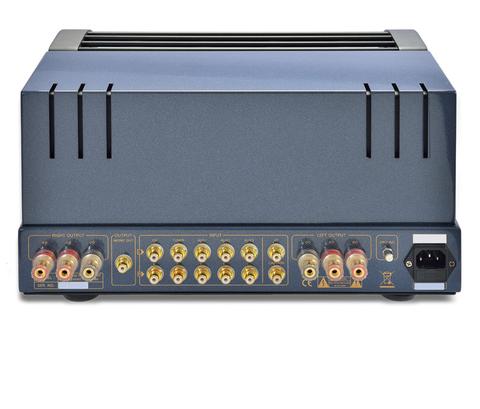 Probably no more important, but certainly more in your face, is the ability to switch between triode and ultra-linear modes, which usually involves quite a bit of jiggery-fuckery, and is basically a pain in the ass to do. For those who don’t know, triode mode gives the listener a softer sound that’s suitable for old recordings that sound too brittle on hi-res systems, while ultra-linear is much more dynamic, with a wider frequency range. It’s great to have the option, although generally, I find myself stuck on ultra-linear just for the extra sonic crunch and attack.
Probably no more important, but certainly more in your face, is the ability to switch between triode and ultra-linear modes, which usually involves quite a bit of jiggery-fuckery, and is basically a pain in the ass to do. For those who don’t know, triode mode gives the listener a softer sound that’s suitable for old recordings that sound too brittle on hi-res systems, while ultra-linear is much more dynamic, with a wider frequency range. It’s great to have the option, although generally, I find myself stuck on ultra-linear just for the extra sonic crunch and attack.
Another cool thing: we got the power! Valve amps are notoriously low-wattage, which means they need very efficient speakers. It turns out that the monstrous Tritons are very efficient indeed, but the Dialogue HP Premium also packs quite a bit of punch on ultra-linear mode at 89 watts. This means that when playing CDs or through my streamer, I’ve never got anywhere near 12 o’clock on the volume dial, although for some reason my turntable seems a little underpowered (with no dedicated phono output, I use a Project phono box).
The amp makes up for its lack of a dedicated phono input with a dedicated high quality headphone amp that’s supposed to be really great, but which (shame on me) I haven’t even tried. The thing is, I really, really don’t like headphones, and although I’ve used them in the past, I find that they make me feel quite claustrophobic. But here are a few words from other reviewers about this feature:
 Last but not least, the remote control. What a beast! Again, it’s so common to find valve amps with no remote, and this is one modern tool that I can’t live without. Not only is it a heavy metal monster, but it works beautifully. This is something that I can’t overstate, as I’ve cohabited with so many poorly designed remotes over the years. The remote for my Yamaha CD-S2000 SACD player, for instance, features rubber buttons that are so small you’d have to have pixie fingers to do them justice, and the remote on my Perreaux 80i had such poor response that I could never get the volume right. The only downside of the PrimaLuna remote is that it’s very cold to hold in winter!
Last but not least, the remote control. What a beast! Again, it’s so common to find valve amps with no remote, and this is one modern tool that I can’t live without. Not only is it a heavy metal monster, but it works beautifully. This is something that I can’t overstate, as I’ve cohabited with so many poorly designed remotes over the years. The remote for my Yamaha CD-S2000 SACD player, for instance, features rubber buttons that are so small you’d have to have pixie fingers to do them justice, and the remote on my Perreaux 80i had such poor response that I could never get the volume right. The only downside of the PrimaLuna remote is that it’s very cold to hold in winter!
So now that we’ve got frostbite on our hands, let’s set the controls for the heart of the sun. Taking a look at the front, it’s a simple layout with the volume knob on the left, and the selector knob on the right, which gives the choice of CD, tuner, aux 1, aux 2, aux 3 and HT. Around the right side there’s the headphone switch and tube selector switch (in this case, the on-board EL34s). On the left side there’s simply the on/off switch, while of course at the back, there’s much more going on. It’s all very heavy duty and nicely gold-plated, and you get to choose whether you prefer 4ohm or 8ohm, depending on the speakers. There’s also a mono input for a sub should you require one.
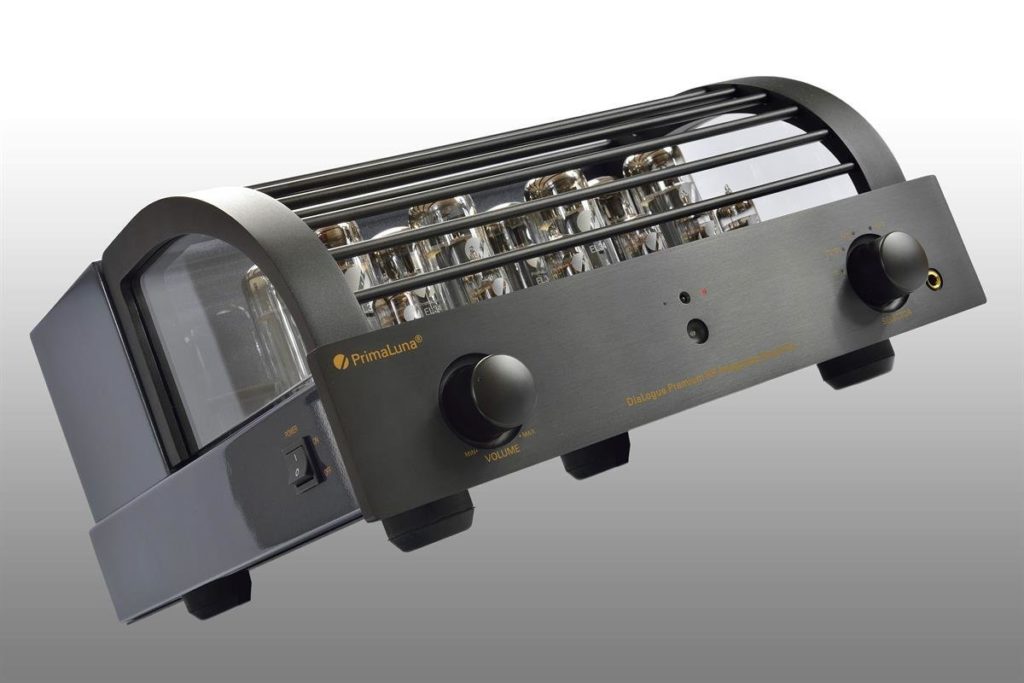 The look is something that – as with the Triton speakers – tends to be quite divisive. Personally, I love the black protection grille, because it separates it visually from all those rather generic looking Chinese-made valve amps. I keep my grille on for protection lest any pre-school infants get their tiny fingers on the hot valves, but it can be removed for those who want to look directly into the comforting glow.
The look is something that – as with the Triton speakers – tends to be quite divisive. Personally, I love the black protection grille, because it separates it visually from all those rather generic looking Chinese-made valve amps. I keep my grille on for protection lest any pre-school infants get their tiny fingers on the hot valves, but it can be removed for those who want to look directly into the comforting glow.
I’ve had the amp for a couple of months now and played loads of CDs, vinyl and digital files on it and my love of music has returned in spades.
As with GoldenEar’s Tritons, the PrimaLuna Dialogue Premium HP has had across the board rave reviews, and they both have a shared ability to box well above their weight. The American PrimaLuna site starts off with a claim that one of their customers sold a $40,000 audiophile marvel to replace it with a Dialogue Premium HP, simply because it sounded better, and I’m not really surprised at that assertion. To my ears, it really is that good.
What’s most surprising is that, at least paired with the Tritons, the PrimaLuna is no less forensic than a solid state amp. There’s none of the “warm and fuzzy” analogue feel that valve amps are saddled with, and if there’s any sonic characteristic that I could attribute to the Dialogue Premium HP, it’s an ability to convey the sound and musicality of the recording that’s being played with (seeming) accuracy.
There are those who reckon that valve amps don’t have the bass grunt required for some types of music (although some valves are apparently noticeably more bass-oriented than others) but via the amazing on-board subs of the Triton speakers, I can find no deficiencies whatsoever in this area. In fact, quite the opposite: when I played Yello’s most recent album, last year’s Toy, I was literally floored with the deep bass and hi-gloss electronic sound design.
I found that whatever I listened to, I was in for a surprise, and even if the recording was less than pristine, there was still something engaging about it. For instance, I recently picked out Pop Will Eat Itself’s This Is The Day… This Is The House… This Is This! from a pile of sadly neglected discs. It sounded rather thin and rather primitive by today’s standards, but the PrimaLuna was able to cogently convey this 1989’s busy, kinetic spirit, energy and humour. I’m pretty sure it would have sounded as attractive as killer shrapnel on the Perreaux.
Similarly, Janis Joplin’s 1969 album I’ve Got Dem Ol Kozmic Blues Again Mama! would never have won any audio engineering awards, even for its most recent – 2009 – remaster. But the PrimaLuna somehow transformed it into a larger-than-life, living, breathing piece of soulful blues with a horn section that really sounded like it was blowing in the room and bass lines that resounded with the kind of weight I could previously have only dreamt of.
It’s the 50th anniversary of Pink Floyd’s first album, 1967’s Piper At The Gates Of Dawn, and it’s always been as sonically troublesome as it is a piece of sustained musical genius. Even though it was recorded just down the hall from The Beatles’ Sergeant Pepper at Abbey Road, it never sounded half as good as that album, although it’s a better record. My 1980s Japanese (stereo) vinyl copy of the album sounded amazing on the Dialogue HP: throbbing with life, again the bass really apparent for the first time, and as with so much music on the Tritons, the percussion was really noticeable, with ‘Nicky’ Mason’s rudimentary but atmospheric drums really hitting the spot.
David Bowie’s final album Blackstar (2016) is beautifully recorded, and it needs to be listened to on a good system to get the intricacies of the jazz-oriented group he hired to bring the project to life. The opening song, ‘Lazarus’, is a real sonic treat and the PrimaLuna/GoldenEar duo really do it justice. Honestly, there are moments in this epic track that raise the hairs on the back of my neck, or where I forget to breathe, it’s that intense and strange, and the odd timing of the drums can really meddle with your head.
https://www.youtube.com/watch?v=rk7nwwlWa8M
Cornelius’s 2002 album Point is one of my favourites of the last 20 years, and I found it was like listening to a remix on the Dialogue HP. Explaining what I love about this intricate and beguiling album would require at least a 10,000 word essay, so I won’t go there, but what I will say is that through the Perreaux, it sounded just a little thin – unlike its very hi-def 2006 sequel, Sensuous. But once again, the PrimaLuna comes up trumps, rendering Point in ways that bring out both its magic and its precision-packed detail. It’s an album that cannily combines everything from lush, easy listening Brazilian touches with hard-edged atonal shredding, from bass-heavy bouts of electronically enhanced groove to semi-acoustic experimentation, and it sounds incredible on this system.
I was working through all my old Horace Silver albums during this time and found to my astonishment that these Bluenote label discs from the 1950s and ‘60s weren’t as thin sonically as I had become accustomed. If there’s one overall theme of my experience with the PrimaLuna, it’s the way it captures acoustic music and really makes it sound like these guys are in the room with you. It’s the first time I’ve really heard Silver’s bands as sympatico individuals working in concord for his music, and I found myself ruing the fact that so many of those great players are already long dead and buried.
So, whether it was some cutting-edge contemporary electronic music or acoustic jazz from the ‘50s or rock from the ‘60s or ‘70s or even some of the better-recorded contemporary pop – everything I played through the PrimaLuna benefited from its ability to make it seem real, resolve detail and create lots of space, and project all the detail that makes sense for an ear to hear.
As a footnote, I do acknowledge that I didn’t do any on the spot comparative listening between the Perreaux amp and the PrimaLuna, and that I didn’t match the Dialogue HP with any other loudspeakers, so I urge anyone auditioning one of these to taste and try with their own gear to ascertain whether they play nicely together.
As you can probably guess, I bought the PrimaLuna Dialogue Premium HP Integrated Amplifier, and I can’t really imagine that I could do much better, unless I suddenly scam the country and become a rich-lister and money is no object.
Yes, there are always flaws, or at least, things not to like, and if they ever make an affordable solid state amp that does the job as well, I’ll probably go for the convenience. Why? Well, because I listen to a lot of music, but my listening is scattered throughout a day so I prefer just to leave it running, but a valve amp is best turned off when you’re not using it. It’s a bit precious even mentioning this, but I don’t like the action of the ‘on’ switch, and I don’t like the fact that when it’s set to ultra-linear (my preferred setting) there’s a small bright red light beaming at me (if I set it to Triode, on the other hand, the small light is green). There’s also a small amount of hum coming through the speaker, but only near-field, not back in the sweet spot listening position. Apparently that’s just one of those valve things that you put up with.
Most importantly, however, is the fact that once again I’m in love with music. Isn’t that what it’s all about?




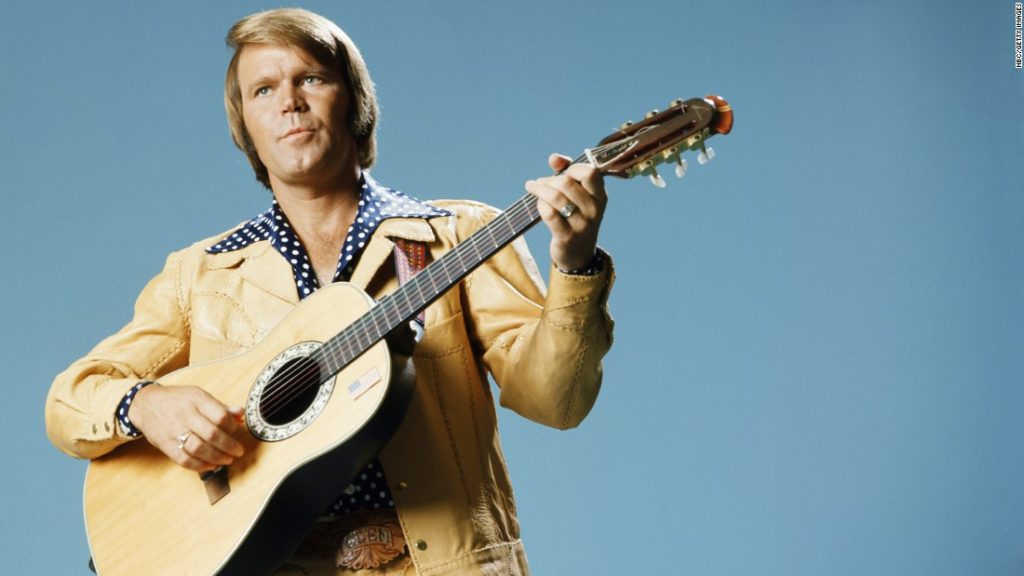
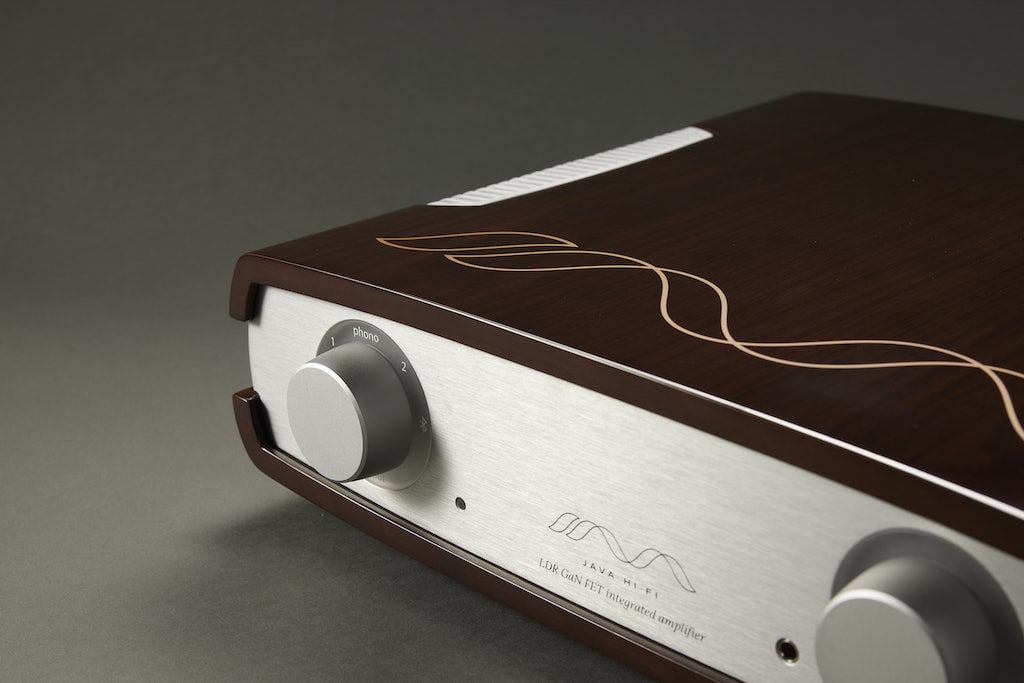
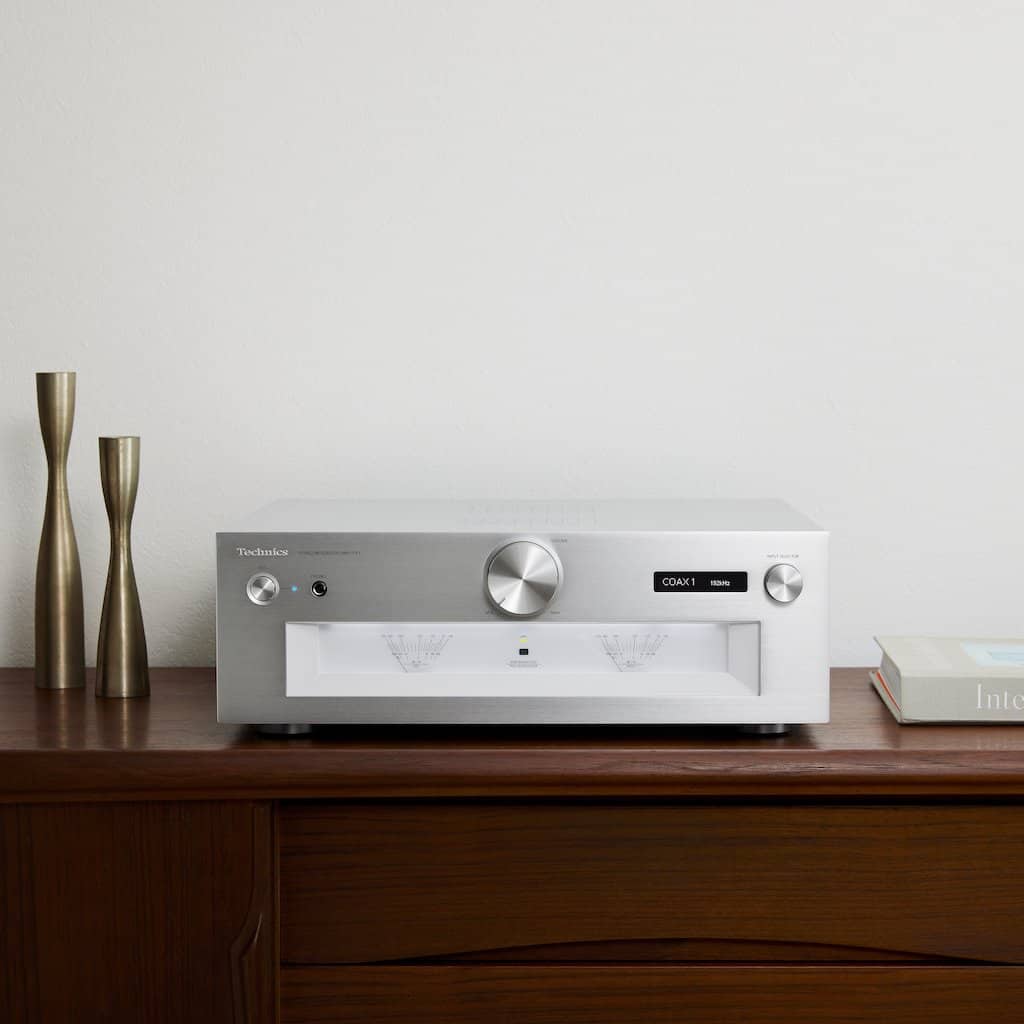
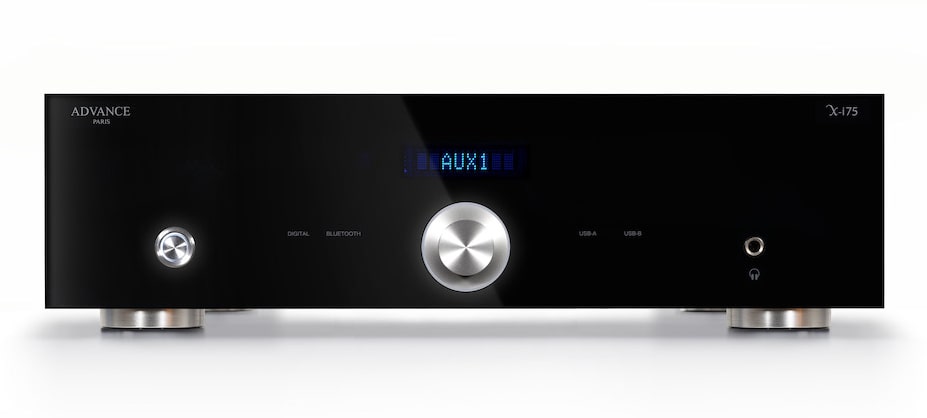

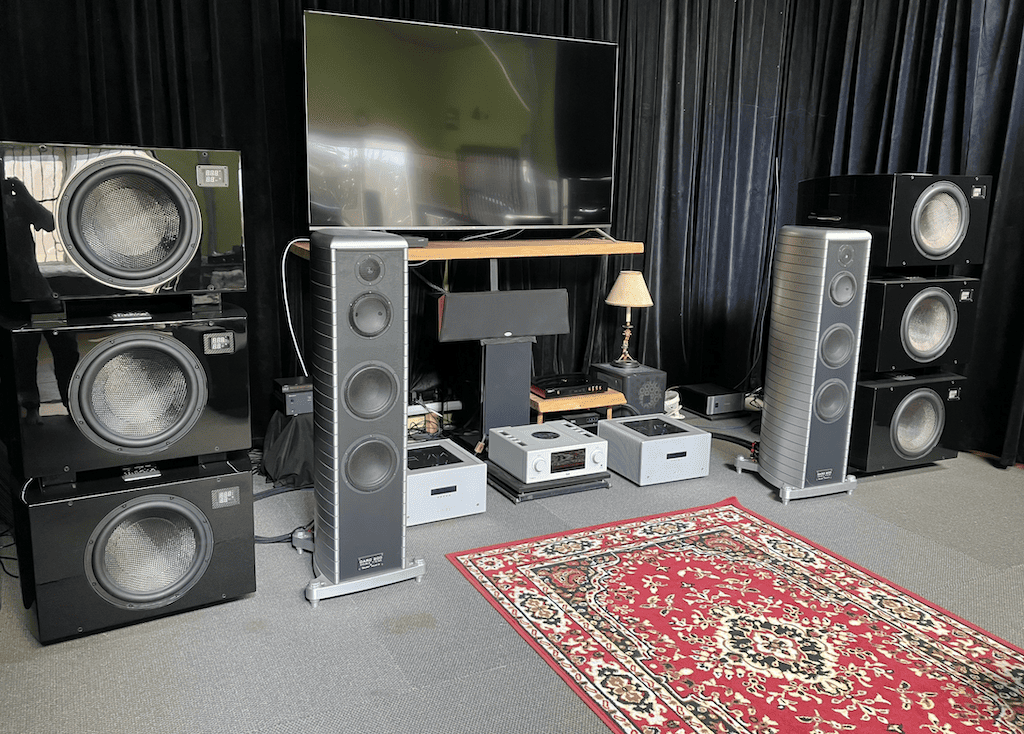

I bought one of these amps last year. Its amazing. Still searching for the right speaker pairing. But even with my current system the space between the enclosures fills the room music and the sources all but disappear
I’m sorry you’re an atheist, God’s very name, “I AM”, suggests you’re not alone. And that he loves and is seeking you.
I agree with everything GS said. I paired my Prima Luna Dialogue with a pair of Klipsch RF7s. I’m hearing sounds I’ve never heard before.
I’m running mine through a pair of Wharfedale bookshelf speakers! As I’m a DJ I have a cambridge pre-amp for a Technics 1200 MK2 Turntable which is brand new running an Ortofon cartridge. I’m running a Pioneer pro CD player which makes all my CDs sound alive! I love Enya but as much as I love vinyl, I cannot listen to her on vinyl. It does not matter! Enya can afford the best studio engineers which she still uses today! Her CDs are flawless! My vinyl and CD collection sounds like it’s been reborn using the Primaluna Dialogue Premium HP Integrated Amplifier. It makes the Wharfedales sound like floor standing units rather than the two way units I own! I love valves. I have only owned one transistor amp, a Technics Class A but considering it was made in the mid 80s, it is a beautiful unit! If I had the money I would replace my surround sound system with all valve amplification. Primaluna are the best valve amps on the market today. I cannot fault them! Cheers from Australia, Andrew Peter Collins.